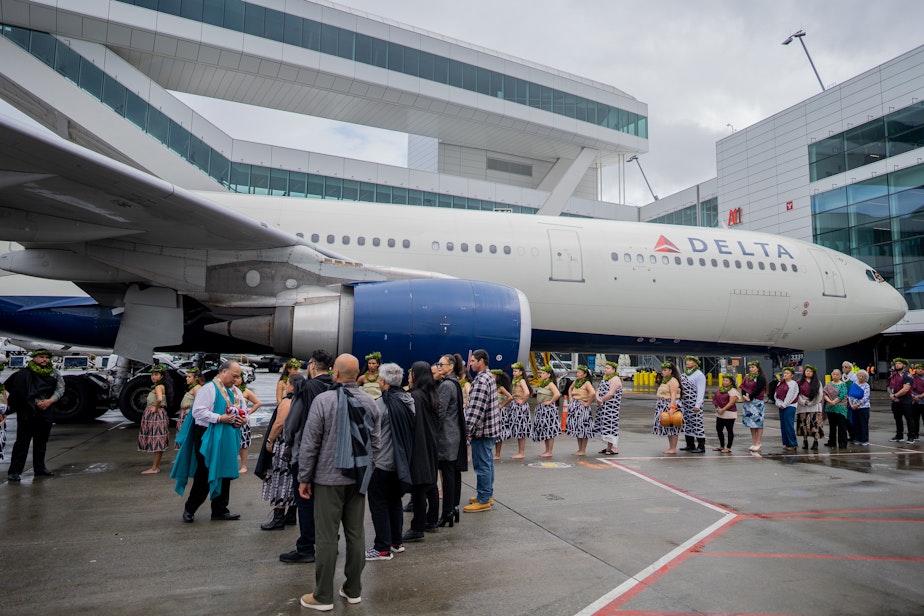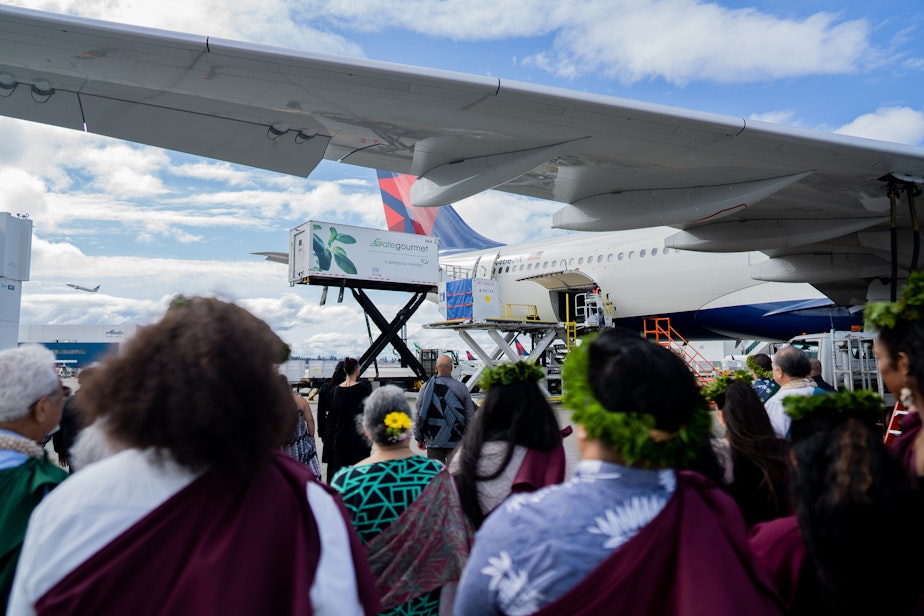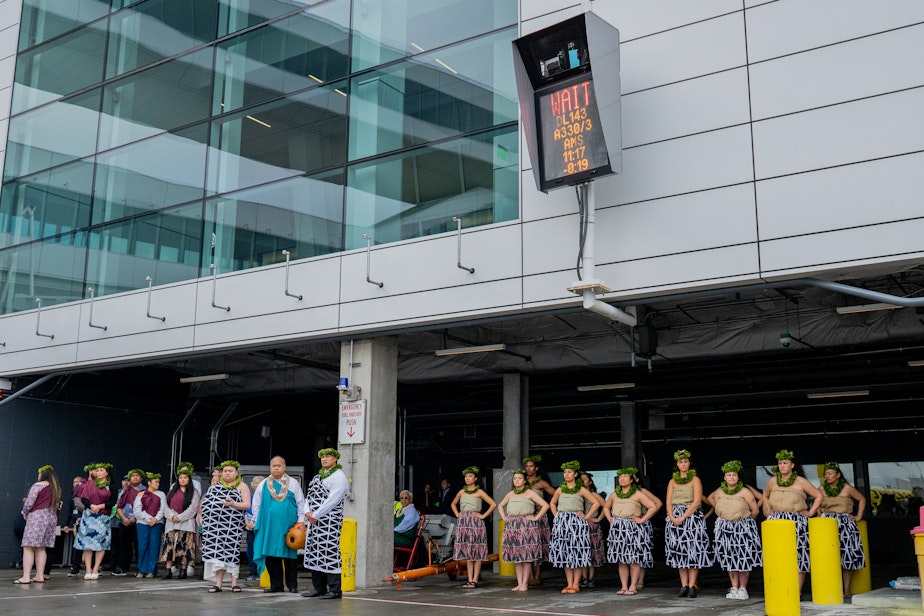Repatriation celebration: Stolen Native Hawaiian remains greeted at Sea-Tac on their way home
A
nthony Kalahui is walking around the tarmac at Sea-Tac Airport, where it's loud and fumes from the jet engines linger. But the rain helps clear the air a little.
Holding a wooden bowl filled with water, steeped with salt and seaweed, he’s cleansing the area where a plane would eventually park.
Around 40 people, including singers, dancers, and musicians are here as well, waiting to greet the plane — or more importantly, what it’s holding.
This will be the final stop before the last leg home for the remains of 54 Native Hawaiians. They had been stolen from Hawaii by explorers, anthropologists, and scientists during the early colonization of the Hawaiian islands. The remains and other artifacts, including an 8-foot-long spear, had been held for decades in collections in Germany, Holland, and Austria. In Hawaiian, the remains are called “iwi kūpuna.”
Sponsored
At Sea-Tac, uncles, male elders in the community, wear large puka shell necklaces; aunties, female elders, have flowers in their hair.
Sponsored

The group is from the Ke’ala ‘O Kamailelauli’ili’i Foundation, a Hawaiian heritage group based out of Federal Way.
Kamaile Hamada is a teacher there. For him, this is a celebration.
“I think it is healing for the Iwi that are going home. But for us, it's a realization — the identity that there were people before us that did journey away from home,” he says.
He and the others arrived at the airport more than two hours before the plane was scheduled to land.
Sponsored
“We’re in the same situation — we went and left home," he says referring to the Native Hawaiian diaspora. "Hopefully we don't have to wait as long as they did to get home, right?”
The ceremony at Sea-Tac was organized by Anthony Kalahui. He’s a sergeant at the Port of Seattle, but he once worked at the Honolulu Police Department, which he says has a deep connection to Hawaii's history. He’s proud of his heritage.
Sponsored
“It's my belief — and I've shared this with many people — that for self-determination and for sovereignty amongst our lāhui, all of our iwi kūpuna have to come home,” he said. Lāhui means community in Hawaiian.
The people here might encounter complex emotions about this procession, Kalahui adds.
“And that's the same thing in regular, traditional funerals: You have people that celebrate the life of somebody, and then you have people feel the grief and anguish.”

The remains are being brought back to Hawaii by a delegation from a Hawaiian nonprofit called Hui Iwi Kuamoo.
Sponsored
The group launched in the 1990s, after the mass desecration of more than 1,000 ancestral remains to build a parking lot on the island of Maui.
Within the United States and its territories, Native groups can rely on the Native American Graves Protection and Repatriation Act to bring people home. But when it comes to working with organizations and countries outside of the United States, Mana Cáceres, one of the volunteer delegates for Hui Iwi Kuamoo, says they have to take a different approach.
He says when they find out one of their grandparents, an ancestor, is being held at a museum or in a private collection, they appeal to the humanity of whoever’s holding their loved ones.
“We know that they love their grandparents the same. So…it's a matter of having them recognize our humanity by recognizing their own humanity.”
Some of these remains have taken up to 27 years to bring home.
Sponsored
Hui Iwi Kuamoo also notifies other Native groups if they encounter remains from different nations during their work. It requires a lot of collaboration, but the result is people get brought home.
After the ceremony at Sea-Tac is over, and the plane's precious cargo is offloaded and put into a holding area, the heritage group goes back into the airport to rest. It’s been a long flight for the delegates, and a busy morning.

They gather in a private space to collect their thoughts. Kamaile Hamada takes song requests from the delegates. Another plane arrives at a different gate, and everyone gathers back down on the tarmac to witness the remains being loaded onto the plane.
At the terminal, they share one last goodbye before Cáceres and the rest of the delegates board the plane holding the remains that take them all home.
Sponsored
As a footnote, Hamada and the local Ke’ala ‘O Kamailelauli’ili’i Foundation are also heading to Hawaii this week. They will be competing at the Merrie Monarch Festival, a multi-day arts and culture event that takes place every year in Hilo. They are one of the few Hula groups from the mainland to be invited to participate.


